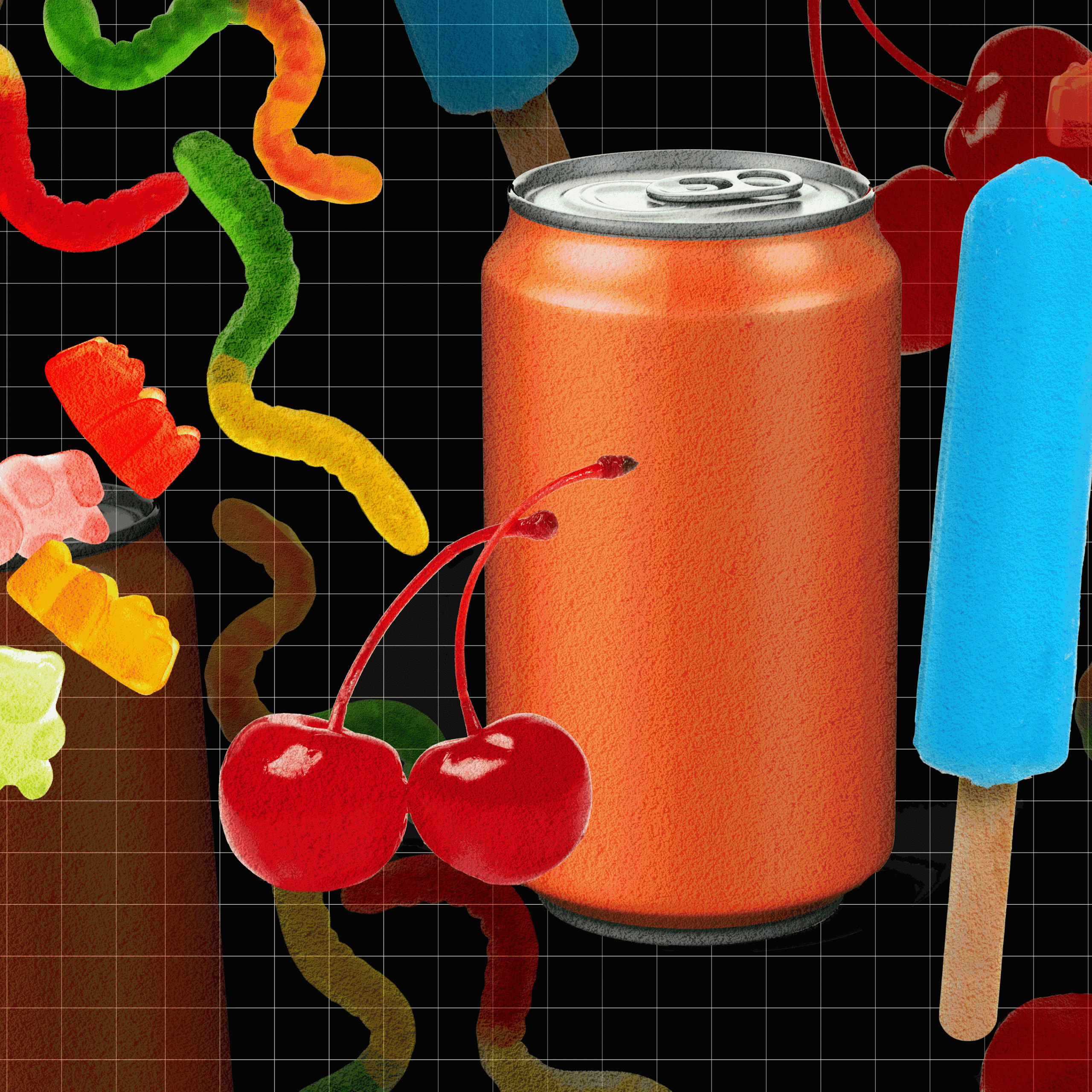On January 15, 2025, the Food and Drug Administration banned the use of FD&C Red 3 in food due to cancer risk. The decision came 35 years after the dye was banned from cosmetics and topical drugs. The safety of synthetic dyes—the chemical compounds that give candies, drinks and snack foods their vibrant hues—has been debated for decades. But the FDA maintains that all the other colorants—except Red 3—are safe.
But experts say the regulator needs to reevaluate the safety of other food dyes too. Data suggests that dyes impact child attention and activity. Europe has mandated warning labels for foods containing certain dyes since 2010. And last summer the California legislature elected to ban the use of six different food dyes in K-12 schools; the law goes into effect in 2027.
So should you be avoiding other food dyes for safety reasons? The evidence is still developing—but here’s what you should know as you decide.
What and Where Are Food Dyes?
The FDA still approves eight synthetic food dyes for use in food: Blue Nos. 1 and 2, Green No. 3, Red No. 40, Yellow Nos. 5 and 6, Orange B and Citrus Red No. 2. These dyes are mainly petroleum-based. And they’re used to offset color loss, enhance natural colors and add color to “fun” and colorless food. “They only serve a cosmetic purpose in food, to make food brighter, more attractive and—frankly—easier to market to children,” says Melanie Benesh, vice president of government affairs at the Environmental Working Group.
Artificial food dyes are prevalent in child-oriented candies, fruit snacks, drink mixes and powders—one study found that they were in about 90% of these foods in one supermarket. And they’re also added to foods you might not expect. “We’ve seen dyes in jarred pickles, chocolate shakes; we found Red 3 in packaged mashed potatoes,” said Thomas Galligan, Ph.D., a toxicology expert and principal scientist for food additives and supplements at the Center for Science in the Public Interest. As a result, artificial food dye consumption in the U.S. was five times higher in 2010 than in 1955.
Red 40 is the most commonly used synthetic food dye, followed by Yellow 5 and Yellow 6. According to CSPI, these three additives make up 90% of food dye usage in the U.S. Red 40, Blue 1, Yellow 5 and Yellow 6 can cause an allergic reaction in some people. And while the incidence of these allergies is low in the broader population, the Yellow 5 allergy is more common in people with aspirin sensitivity.
In the EU, foods with Red 40, Yellow 5 and Yellow 6 must carry a warning label about their effects on child neurobehavior. A 2021 report by the State of California’s Office of Environmental Health Hazard Assessment linked all six of the most commonly used food dyes—Blue 1, Blue 2, Yellow 5, Yellow 6, Red 3 and Red 40—to hyperactivity and neurobehavioral issues in children, which led to the school food ban. Rather than looking at the effect of individual dyes, almost all the studies included in the OEHHA’s assessment evaluated a mix of dyes, because that’s how they’re consumed in the real world, Galligan said. The analysis found that synthetic food dyes were associated with negative neurobehavioral effects like inattentiveness, restlessness and hyperactivity in children who are sensitive to dyes. “I think of it as akin to an allergy in that not every kid is going to be impacted,” Benesh says. But those who are sensitive experience an almost immediate impact when they consume the dyes, she explains.
Other, more long-term side effects of food dyes aren’t as well known. Red 3 has an established cancer risk in animals and will be removed from all food by 2027. Some of the other food dyes, like Green 3 and Yellow 6, have also been potentially linked to cancer in animal studies, but the evidence is less clear in humans. “To evaluate for carcinogenicity, we use three types of studies,” says Emanuela Taioli, M.D., M.S. Ph.D., who was a reviewer for the California OEHHA’s analysis and is the associate director for population science at Mount Sinai. Those studies are cell studies, animal studies and human studies. Human studies are the hardest to do. But in cell studies and mouse studies, synthetic food dyes have shown “signs of cell dysregulation that say this could be a cancer risk,” she says.
Should You Avoid Food Dyes?
Everyone should avoid Red 3, Benesh says. And by 2027 the additive should no longer be a cause for concern because it won’t be in foods anymore. As for the other dyes, current evidence suggests that they don’t affect every person or child. So every person has to decide their own risk tolerance, Benesh and Taioli agree. From a legal standpoint, Benesh said the rest of the food dyes fall short of safe. “The legal standard [of safety] in American law is there has to be reasonable certainty of no harm,” she said. But with the EU warning labels and the California report showing strong evidence of neurotoxicity, the FDA can’t have reasonable certainty, she said. Since 2010, CSPI has been recommending that all people avoid food dyes. “When we are talking about something that is really unnecessary, the level of risk we should accept is effectively zero,” Galligan said.
If you do want to avoid food dyes, you can shop around them. It may take some extra time, but you can rule out dyes by checking the ingredient list. And some grocers, like Trader Joe’s and Aldi, have already elected not to sell foods that use synthetic food dyes. But ultimately, consumers need more action from the FDA, Benesh said. “If there is a need for restriction, it’s the government’s job to impose those restrictions so consumers don’t bear that burden of what they should or should not buy.”
Frequently Asked Questions
-
Is it safe to eat food dye?- Food dyes can cause negative neurobehavioral effects, including restlessness, hyperactivity and attention issues in children who are sensitive to the dye.
-
What does Red 40 do to your body?- Red 40 is the most commonly used synthetic food dye and has been linked to neurobehavioral effects in children. In rare cases, people can be allergic to Red 40. The allergy typically manifests as skin irritation. There have been several studies on the health effects of Red 40, but they have been largely flawed and inconsistent, according to CPSI and the FDA.
-
What does Blue 1 do to your body?- Blue 1 can occasionally cause an allergic reaction. And one test-tube study found that it can affect neurons. It may be safe, according to CSPI, but more studies are needed.








